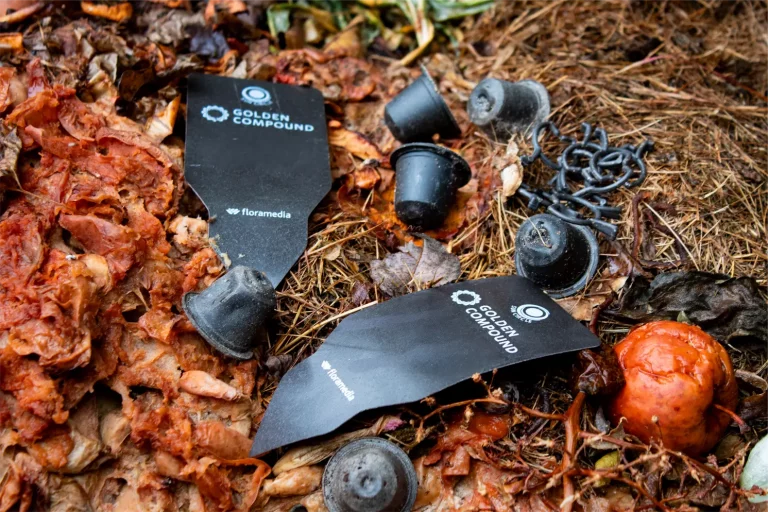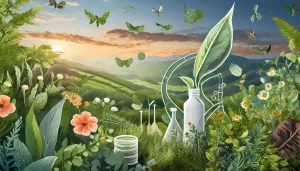Understanding the Differences in Biodegradation
When people hear “biodegradable plastic,” they often imagine that it simply disappears. But biodegradation is far from a simple process. It depends on many factors – especially the environment in which the material ends up at the end of its life cycle.
The BioSinn paper by the nova-Institute makes this very clear: not all materials degrade in the same way. Temperature, humidity, oxygen levels, microorganisms, and even the pH of the surrounding environment determine how fast (or slow) biodegradation occurs. Whether a material disappears within weeks or lingers for years depends heavily on whether it ends up in compost,in soil,in freshwater or in the ocean .
Industrial Compost – Controlled Conditions, Fast Degradation
Industrial composting facilities provide ideal conditions: around 60 °C, high moisture, plenty of oxygen, and a thriving population of microorganisms. Under these controlled circumstances, biodegradable plastics such as PLA, PBAT, or PBS can fully decompose within a few weeks.
However, these conditions are rarely found in nature. Products certified under DIN EN 13432 must reach at least 90% degradation within six months – but only under industrial composting conditions.
Home Compost – Natural Processes, Slower Degradation
A home compost pile tells a different story. Temperatures and moisture levels fluctuate with the seasons, and microbial activity is lower. As a result, degradation happens much more slowly.
Products labeled “OK Compost HOME” are specifically designed for these mild conditions, breaking down at temperatures below 30 °C over the course of up to 12 months.
So a “biodegradable” product is not automatically suitable for home composting – only certified materials truly are.

Soil – A Living but Variable Ecosystem
Soil is a living, breathing system – but it varies greatly. Microbial density, moisture, and temperature can differ widely between agricultural land, forest soils, and urban areas.
In agricultural soil, biodegradation can occur relatively efficiently thanks to oxygen and microbial activity. But in forest soils or compacted urban ground, conditions are far less favorable.
Products certified as “OK biodegradable SOIL” or according to DIN EN 17033 (for example, mulch films) are designed to fully degrade in soil within up to 24 months.
Freshwater – Slow and Seasonal Degradation
Rivers, lakes, and ponds have lower temperatures (0–35 °C) and far fewer microorganisms compared to compost or soil. As a result, biodegradation is significantly slower.
Only a few materials currently carry the “OK biodegradable WATER” label, which requires 90% degradation within 56 days under freshwater conditions – a demanding benchmark that most plastics cannot meet.
Saltwater – The Ultimate Challenge
Marine environments are the toughest test for biodegradation. Low temperatures, high salinity, and a lack of active fungi or bacteria mean that plastics can persist for decades.
While there are standards such as ASTM D6691 and certifications like “OK biodegradable MARINE”,only a handful of materials currently meet these requirements. Developing marine-degradable materials remains one of the biggest technical challenges – and an important task for the future.
Why These Differences Matter
The claim “biodegradable = eco-friendly” is too simplistic. A material that breaks down perfectly in industrial compost may persist for years in soil or water.
That’s why it’s essential to match the material’s biodegradation profile to its real-world disposal environment. A home-compostable capsule doesn’t belong in the ocean, and an industrially compostable film shouldn’t end up on farmland.
We develop biodegradable natural fiber composites that are purpose-designed for specific environments – such as home-compostable coffee capsules or biodegradable tree shelters. This ensures that our materials degrade where they actually remain – and don’t turn into microplastics.
Biodegradation isn’t a one-size-fits-all solution. It’s about choosing the right material for the right environment. Anyone developing sustainable products must understand these differences – and act where recycling stops, and nature begins.



